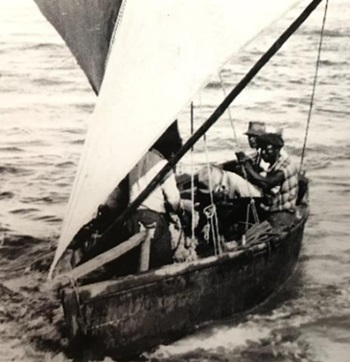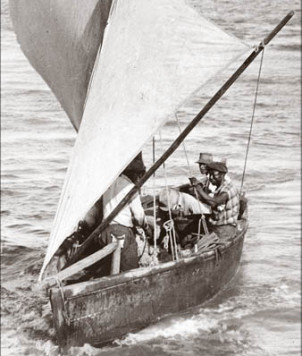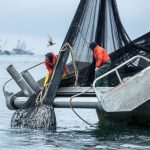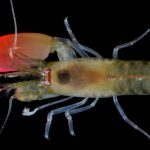Tag Archives: The mosquito fleet
Do You Know Your Lowcountry? The Mosquito Fleet
 For more than two centuries before refrigeration, these Black fishermen braved the winds, waves and weather to supply Charlestonians daily with fresh fish and seafood, a mainstay of local diets. The fleet’s work was hard and dangerous, requiring perseverance in the face of all kinds of weather, as memorialized in America’s first native opera, “Porgy and Bess.” So critical was their role, Revolutionary War Gen. Charles Cotesworth Pinckney donated a parcel of his waterfront property at the east end of Market Street to serve as their wharf. Believing there was safety in numbers, the boats departed, fished and returned together. Though undocumented, folklore credits one of Pinckney’s daughters with giving the fleet its nickname, as she noted one morning that the boats looked like a swarm of mosquitos coming over the horizon. photos, more, >>click to read<< 08:12
For more than two centuries before refrigeration, these Black fishermen braved the winds, waves and weather to supply Charlestonians daily with fresh fish and seafood, a mainstay of local diets. The fleet’s work was hard and dangerous, requiring perseverance in the face of all kinds of weather, as memorialized in America’s first native opera, “Porgy and Bess.” So critical was their role, Revolutionary War Gen. Charles Cotesworth Pinckney donated a parcel of his waterfront property at the east end of Market Street to serve as their wharf. Believing there was safety in numbers, the boats departed, fished and returned together. Though undocumented, folklore credits one of Pinckney’s daughters with giving the fleet its nickname, as she noted one morning that the boats looked like a swarm of mosquitos coming over the horizon. photos, more, >>click to read<< 08:12
Charleston’s maritime history – The mosquito fleet
 They were among the best watermen in Charleston’s maritime history, their small boats a familiar and beloved sight as they sailed out each morning and returned each afternoon with their catch. From the 1860s until the 1950s, the several hundred African American fishermen who worked the sailing boats of the mosquito fleet formed the core of Charleston’s seafood industry. They fished the creeks, rivers, harbor, and, weather permitting, the offshore banks. They would often go as far out as 30 miles to catch porgy, bass, whiting and, if lucky, a “jack fish.” “One by one they shoved off, and lay in the stream while they adjusted their spritsails and rigged their full jibs abeam, like spinnakers, for the free run to the sea,” wrote Dubose Heyward, describing Charleston’s mosquito fleet in his celebrated novel, Porgy. Read the rest here 13:58
They were among the best watermen in Charleston’s maritime history, their small boats a familiar and beloved sight as they sailed out each morning and returned each afternoon with their catch. From the 1860s until the 1950s, the several hundred African American fishermen who worked the sailing boats of the mosquito fleet formed the core of Charleston’s seafood industry. They fished the creeks, rivers, harbor, and, weather permitting, the offshore banks. They would often go as far out as 30 miles to catch porgy, bass, whiting and, if lucky, a “jack fish.” “One by one they shoved off, and lay in the stream while they adjusted their spritsails and rigged their full jibs abeam, like spinnakers, for the free run to the sea,” wrote Dubose Heyward, describing Charleston’s mosquito fleet in his celebrated novel, Porgy. Read the rest here 13:58











































